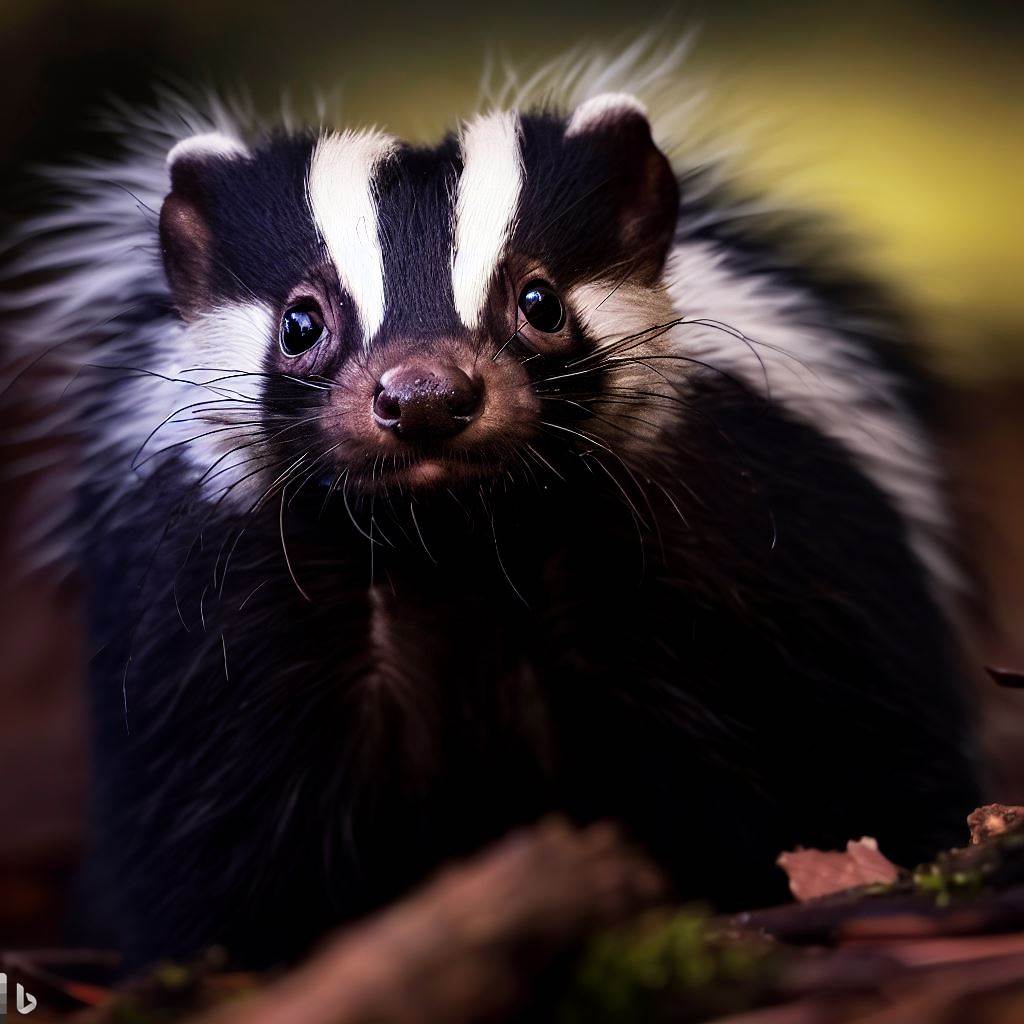
ECO-FRIENDLY PEST CONTROL INC.
Sun - Thur: 8AM - 8PM

Sun - Thur: 8AM - 8PM

Skunks are fascinating creatures known for their distinct appearance and potent defense mechanism. In this article, we will explore the life and habits of skunks, shedding light on their behavior, habitat, diet, reproduction, and interactions with humans.
Habitat and Adaptation: Skunks are native to North and South America, and they can be found in a variety of habitats, including forests, grasslands, and suburban areas. They are adaptable animals that can thrive in both rural and urban environments. Skunks are known for their ability to dig burrows or use pre-existing dens for shelter.
Physical Characteristics: Skunks have a unique appearance with their black fur and white stripes running along their back and tail. These stripes act as a warning signal to potential predators, indicating their defensive capabilities. Skunks possess sharp claws and strong front legs, which they use for digging and foraging.
Nocturnal Behavior: Skunks are primarily nocturnal creatures, meaning they are most active during the night. They have excellent night vision, which helps them navigate their surroundings and locate food sources.
Diet: Skunks are omnivorous animals with a varied diet. They feed on insects, small mammals, birds, eggs, fruits, vegetables, and even carrion. Skunks are opportunistic foragers and will scavenge for food in both natural and human-made environments.
Defense Mechanism: One of the most well-known aspects of skunks is their ability to spray a foul-smelling liquid as a defense mechanism when threatened. This spray, produced by scent glands located near their anus, acts as a powerful deterrent to potential predators. Skunks will typically display warning behaviors, such as stomping their feet and arching their backs, before resorting to spraying.
Reproduction and Family Life: Skunks have a breeding season that typically occurs in the late winter or early spring. After a gestation period of about two months, female skunks give birth to a litter of four to seven kits. The kits are born blind and rely on their mother for care and protection. Skunks are generally solitary animals, except during the breeding season and when the kits are still dependent on their mother.
Interaction with Humans: Skunks have adapted to human-modified landscapes, and as a result, encounters with humans are not uncommon. While skunks generally try to avoid conflict, they may spray if they feel threatened or cornered. In urban areas, skunks may take advantage of food sources such as garbage cans or pet food left outside. It's important to practice responsible waste management and secure potential food sources to minimize interactions with skunks.
Conservation and Management: Skunks play a valuable role in ecosystems by controlling insect populations and aiding in seed dispersal. However, conflicts can arise when skunks damage property or come into contact with pets. It is essential to employ humane and effective management strategies, such as habitat modification, exclusion techniques, and seeking professional assistance when necessary.
In conclusion, skunks are fascinating creatures with unique adaptations and behaviors. While their defensive spray is their most well-known attribute, there is much more to appreciate about their life and habits in the natural world.